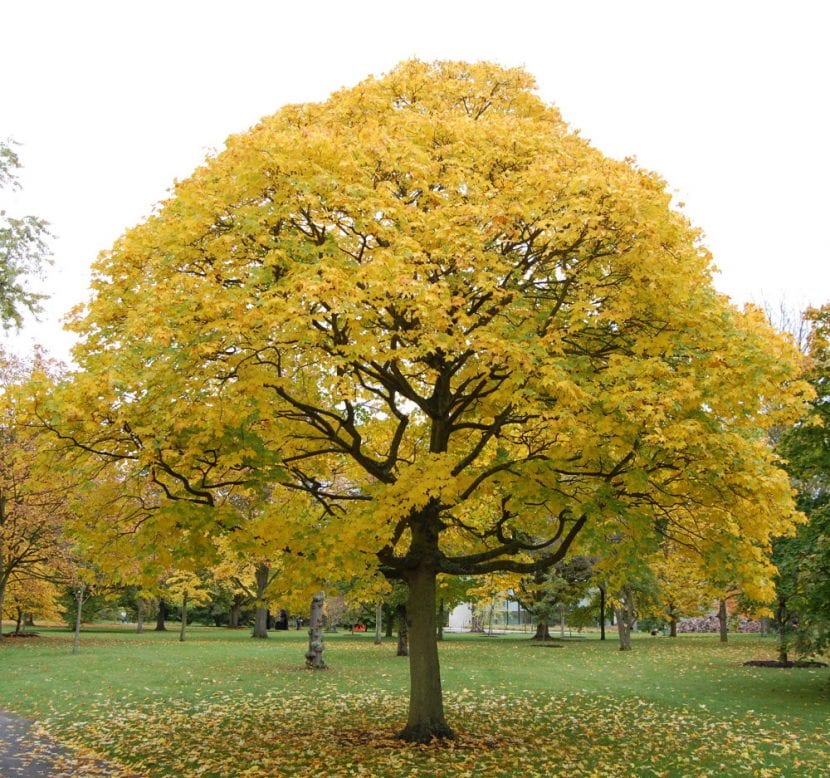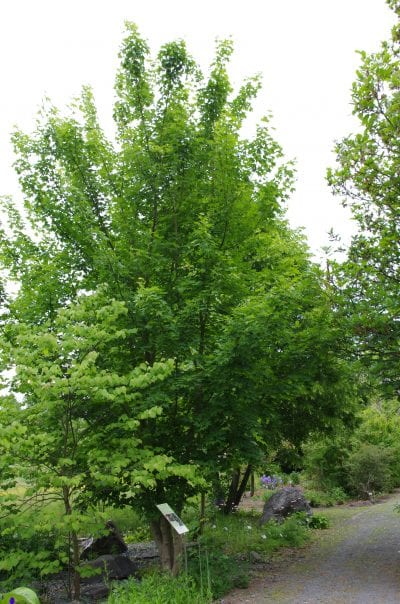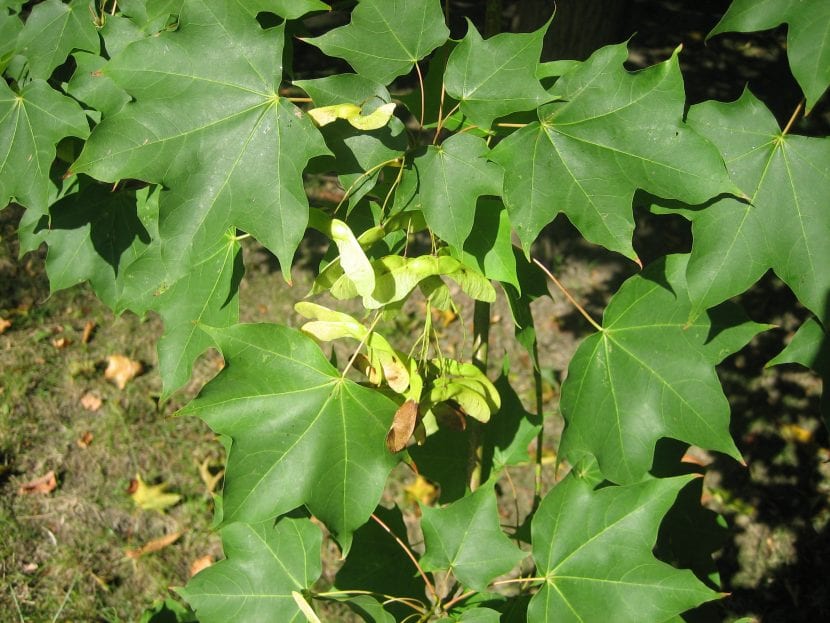
Acer cappadocicum 'Aureum'
Image – GBS Garden Center
Maple trees are deciduous trees that turn beautiful in the fall, taking on reddish, yellow or orange hues. Some species are well known, such as the Acer palmatum (Japanese maple) or the Acer pseudoplatanus (false banana maple), but there are others that also deserve that we reserve a corner for them in our gardens, such as the Cappadocia maple.
It is not well known yet, but the truth is that it is an excellent tree to provide shade, which also resists the cold well. Do we know it? 🙂
Characteristics of the Cappadocian maple

Our protagonist, whose scientific name is acer cappadocicum, is a deciduous tree native to Asia that can grow to a height of more than 25 meters, with a rounded crown once adult and very leafy. Sometimes it acquires a shrubby appearance with several trunks. The leaves have 3-5 lobes and are 6-12cm long and almost as wide. These are dark green in color, turning yellow (the 'Aureum' variety or red (the 'Rubrum' variety) during the fall.
The flowers, which are dioecious (that is, there are male and female flowers) are greenish-white, small. They are grouped in corymbiform panicles about 7cm long. The samaras are double, winged, and are between 3 and 8 cm long. The flowering time of this beautiful tree is in spring.
How do you take care of yourself?

Would you like to have a specimen in your garden? Take note of our advice:
- Location: outdoors, in full sun or semi-shade.
- Land: grows well in acidic or slightly acidic soils, with a pH between 5 and 6.5.
- Irrigation: it has to be watered three or four times a week in summer, and two or three times a week the rest of the year.
- Subscriber: from spring to summer it is advisable to fertilize it with organic fertilizers, such as guano or manure, putting a 3-4cm layer around the trunk once a month.
- Planting time: in spring.
- Multiplication: by seeds by cold stratification for 3 months, by cuttings and by layering in spring.
- Rusticity: it withstands frosts up to -15ºC without problems, but not temperatures of more than 30ºC.
What did you think of this tree?